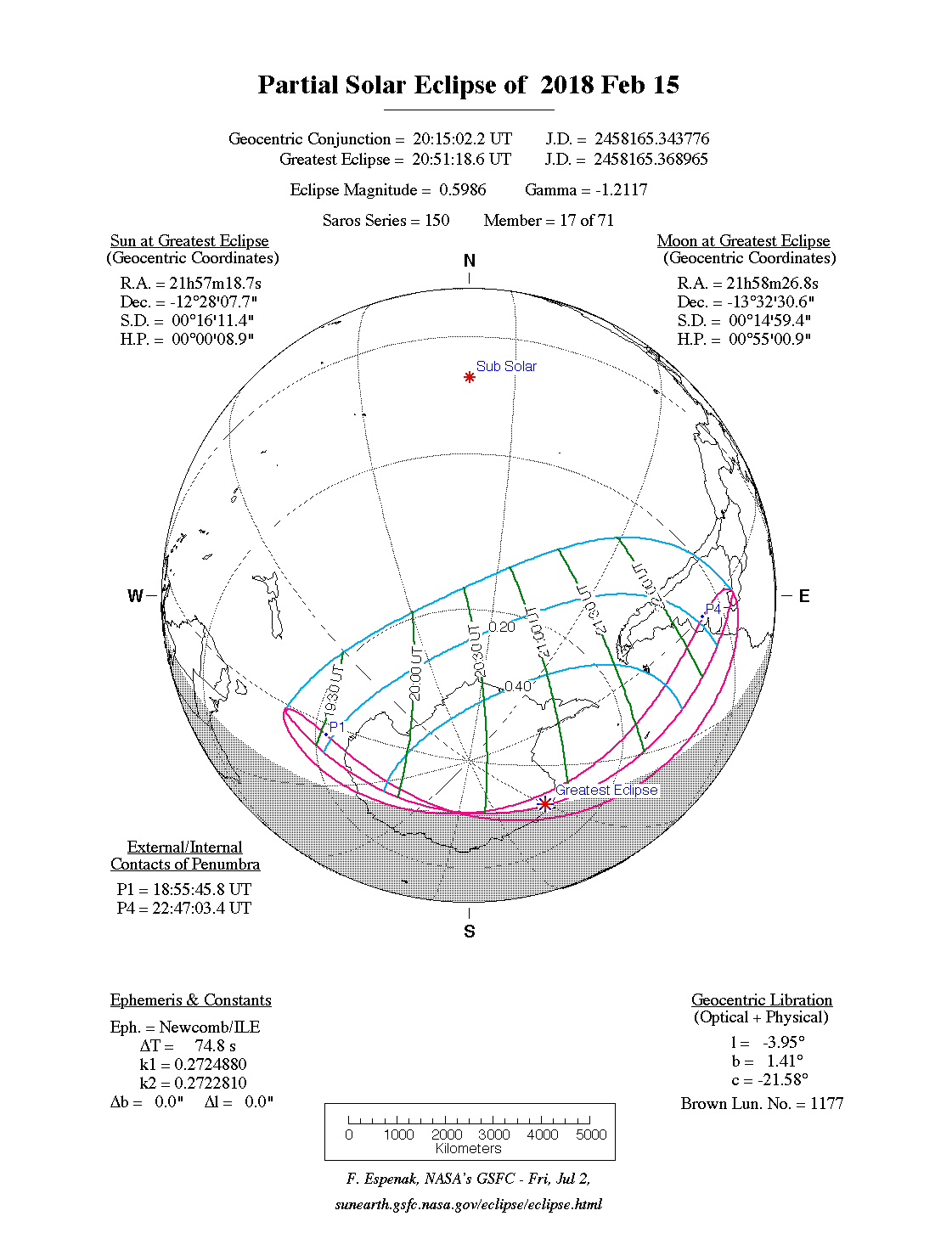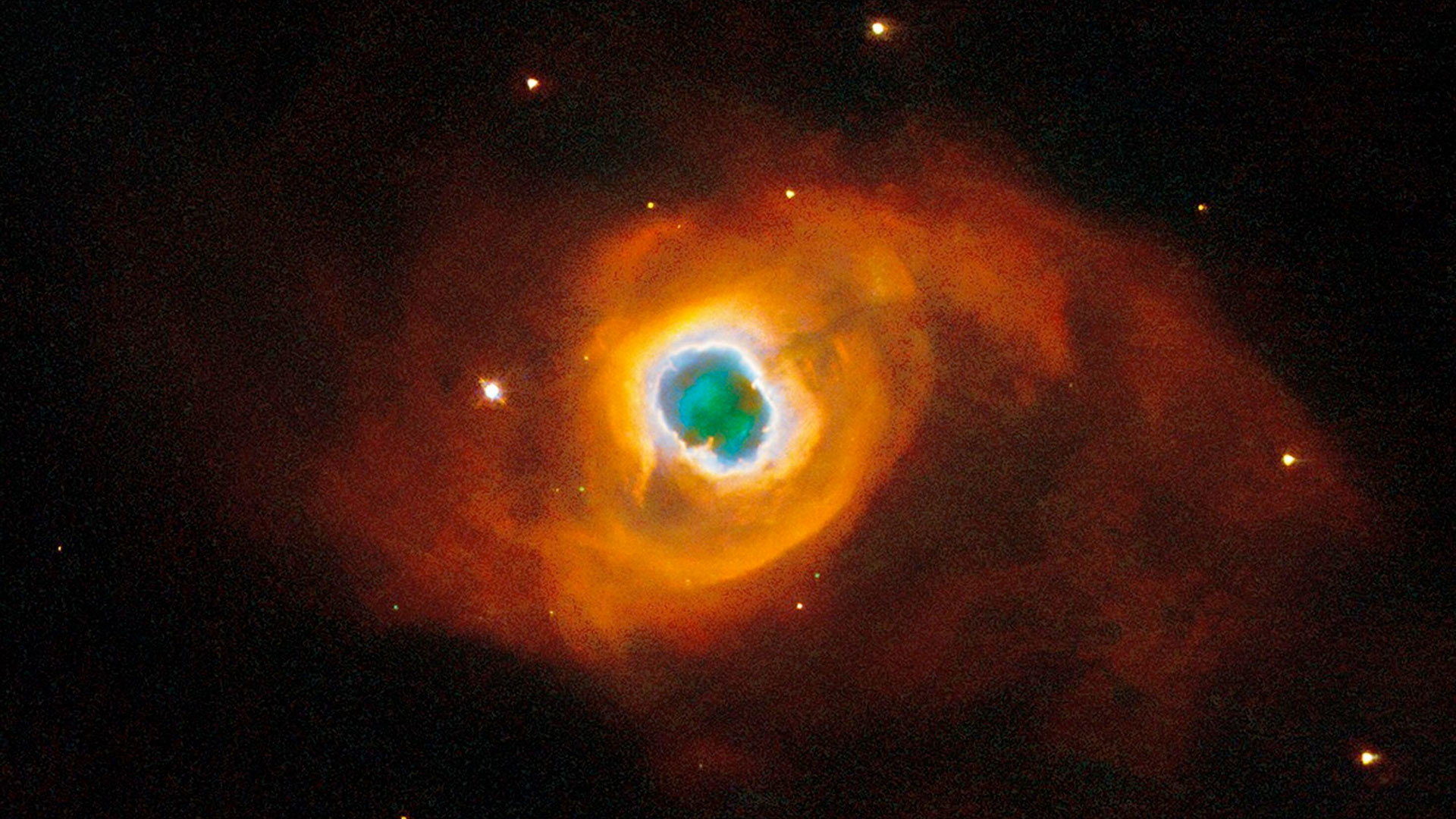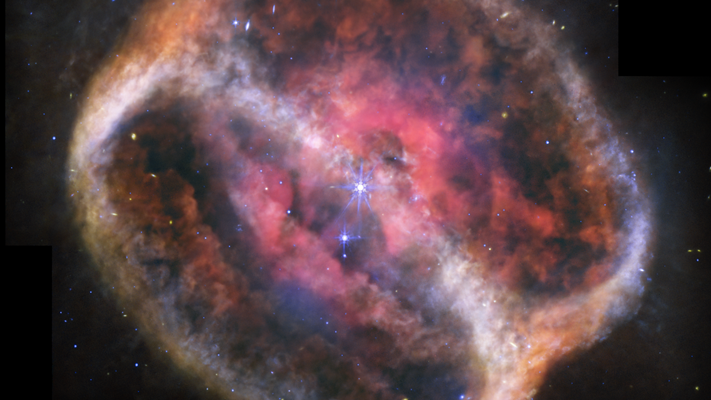Partial Solar Eclipse Occurs Thursday at the Bottom of the World
On Thursday (Feb. 15), the first eclipse of the sun since last summer's historic solar event will take place. However, unlike the Great American Solar Eclipse of Aug. 21, the upcoming eclipse will be only partial, with its visibility confined to far southerly latitudes.
To many people, the ability of astronomers to predict the occurrence of an eclipse of the sun or moon may seem miraculous. Yet, forecasting when the sun or moon will darken requires nothing more than a background in celestial mechanics. For one thing, eclipses do not occur randomly or haphazardly. There is a specific schedule that can be worked out based upon the movements of the Earth and the moon. [The Solar Eclipses of 2018 Explained]
The geometry of eclipses
If the Earth, moon and sun were all in the same plane, there would be eclipses every month. A lunar eclipse occurs when the Earth gets between the sun and moon, and a solar eclipse occurs when the moon passes between the sun and Earth. As it turns out, however, the plane of the moon's orbit is slightly out of kilter with respect to the Earth's orbital plane (called the ecliptic), by an angle of just over 5 degrees.
So, ordinarily, at the time of new phase, the moon will pass either above or below the sun, with no eclipse. In the same way, when it turns full, the moon will usually pass above or below the Earth's shadow and escape being eclipsed itself.
But twice each year, at intervals of six months, the moon is either at or near one of two points where its path intersects the Earth's orbital plane. That point of intersection is called a "node." If, at the time of full moon, the moon is within a certain distance of this point of intersection, then the sun, Earth and moon will be in a nearly straight line. And depending on just how far the moon is from the node, the moon will dip partly or completely into the Earth's shadow. Similarly, two weeks later, at the time of a new moon, if the distance of the moon from the node has not become too great in the interim, we will have an eclipse of the sun. That means the moon passes partially or squarely across the disk of the sun.
We call such a time an eclipse season. This is a period of about a month during which eclipses can happen, because the moon is crossing at midlevel behind or in front of the Earth; so, in each season generally, there is an eclipse of the moon and one of the sun. The midpoint of the current eclipse season was Feb. 3, following the amazing (and rare) Super Blue Blood Moon lunar eclipse of Jan 31.
How things (barely) line up for Thursday
Two weeks ago, the full moon passed through the Earth's shadow only about 5.5 hours before the satellite reached its ascending node. That is, the moon was moving on a southwest-to-northeast trajectory when it passed through the intersection point with the Earth's orbital plane. So, it passed just to the south of the center of Earth's shadow and, in the process, became completely immersed in the shadow's darkest portion, the umbra, resulting in a total lunar eclipse. [The Greatest Skywatching Events of 2018]
Get the Space.com Newsletter
Breaking space news, the latest updates on rocket launches, skywatching events and more!
Since then, the moon, moving along its orbit, has come around to the Earth's sunward side. But it's almost arrived at the node too late to produce a solar eclipse; passing through its descending node (moving from northwest to southeast) on Valentine's Day, it still has to travel on for another 24 hours, before finally reaching its new moon position on Feb. 15.
So, the lunar shadow's interaction with our Earth amounts to just a glancing blow; its dark umbral shadow — from where we can see a total eclipse — completely misses the Earth by some 4,800 miles (7,700 kilometers), while its outer shadow, the penumbra, only brushes the southern end of our planet.
Region of visibility on Thursday
This eclipse most definitely favors Antarctica, as about two-thirds of that icy continent will be swept by the moon's penumbral shadow.
Greatest eclipse — defined as the point when the largest amount of the sun will be covered within the entire range of the visibility of the eclipse — will be visible (weather conditions permitting) very near to the British Halley Research Station, located on the Antarctic's Brunt Ice Shelf. (The primary function of this research station at the bottom of the world is to study the Earth's atmosphere.)
From there, the sun will appear about 10 degrees above the west-southwest horizon (equal to the width of your clenched fist held at arm's length). Viewd through proper solar filters, the moon will appear to bite roughly three-fifths or so into the sun's upper edge. The 70 or so people who work at Halley during the Southern Hemisphere summer will hopefully be able to take a break from their normal routine and enjoy this solar sky show.
Parts of Chile, Argentina and Paraguay; all of Uruguay; the southernmost tip of Brazil; and the Falkland Islands will also see the moon occult the sun's disk, though to a much lesser degree as the sun approaches setting.
Approximately 60 million people live within the zone of visibility for this eclipse, a far cry from the many hundreds of millions who viewed the Great American Solar Eclipse last summer.

Eclipse schedules
This eclipse table, courtesy of Fred Espenak of EclipseWise.com, is a short listing of local circumstances and eclipse times for a number of cities in South America.
The sun's altitude and azimuth, the eclipse magnitude (defined as the fraction of the sun's diameter eclipsed by the moon), and eclipse obscuration (defined as the percentage of the area of the sun’s disk obscured by the moon) are all given at the moment of maximum eclipse. When the eclipse is in progress at sunset, this information is indicated by "—s."
The 2018 Feb. 15 Solar Eclipse Calculator is an interactive web page than can quickly calculate the local circumstances for the eclipse from any geographic location not included in the short table.
Willing to travel in spite of the diminutive coverage
Even assiduous eclipse watchers who travel halfway around the world for a chance to witness a total eclipse of the sun will likely pass on Thursday's meager solar event.
Then, there is Jay Pasachoff, Field memorial professor of astronomy at Williams College in Massachusetts, who is willing to accept even the smallest crumbs from the eclipse tables and will travel to Buenos Aires with his wife, Naomi, to watch the moon take a small scallop out of the sun.
"While there may be little scientific value for optical observations of partial solar eclipses, I do get a benefit from testing my cameras and lenses on partial phases," Pasachoff told Space.com. "And, as chair of the IAU [International Astronomical Union] Working Group on Solar Eclipses, I do outreach. This time, I am lecturing at the Galileo Galilei Planetarium and giving additional newspaper interviews.
"So, I have a role in acquainting the local people [with the fact] that there will be an eclipse and how to observe it safely," Pasachoff said. "It will be my 67th solar eclipse [of which 34 were total]."
Editor's note: Are you traveling to see this solar eclipse (or already in the visibility area)? If so, and you capture a photo of the partial eclipse that you'd like to share with Space.com and our news partners, send images and comments in to: spacephotos@space.com.
Joe Rao serves as an instructor and guest lecturer at New York's Hayden Planetarium. He writes about astronomy for Natural History magazine, the Farmers' Almanac and other publications, and he is also an on-camera meteorologist for Fios1 News in Rye Brook, N.Y. Follow us @Spacedotcom, Facebook and Google+. Original article on Space.com.
Join our Space Forums to keep talking space on the latest missions, night sky and more! And if you have a news tip, correction or comment, let us know at: community@space.com.

Joe Rao is Space.com's skywatching columnist, as well as a veteran meteorologist and eclipse chaser who also serves as an instructor and guest lecturer at New York's Hayden Planetarium. He writes about astronomy for Natural History magazine, Sky & Telescope and other publications. Joe is an 8-time Emmy-nominated meteorologist who served the Putnam Valley region of New York for over 21 years. You can find him on Twitter and YouTube tracking lunar and solar eclipses, meteor showers and more. To find out Joe's latest project, visit him on Twitter.









